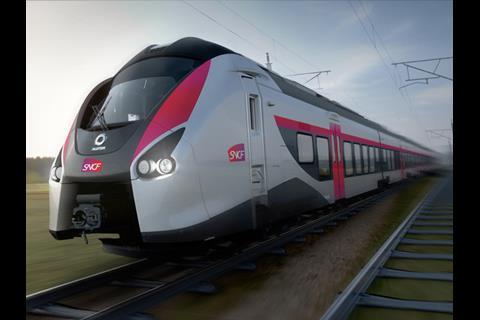FRANCE: Setting out the first progress update in the government’s ‘road map’ to reviving France’s conventional long-distance passenger trains, Transport Secretary Alain Vidalies confirmed on February 19 that the ‘rolling stock fleet for these trains would be entirely renewed by 2025’.
Suggesting that a major factor in the decline in ridership and revenue from France’s Trains d’Equilibre du Territoire was the comfort and reliability of SNCF’s ageing fleet, Vidalies said a €1·5bn investment programme would be at the heart of the turnaround plan, final details of which would be published on July 1.
However, the government has already identified priority measures to be taken forward by the rail industry, the regions and other parties. At the forefront of these is the procurement for entry to traffic by 2020 of ‘premium-quality’ inter-city trains for three TET corridors ‘where speed is a defining characteristic’: Paris – Clermont Ferrand, Paris – Toulouse via Limoges, and Bordeaux – Toulouse – Marseille.
SNCF is to call tenders for a fleet of trains ‘designed for longer journeys, with all the necessary amenities on board’. A ‘consultation exercise’ involving passenger groups is to take place over the next three months to ensure the new vehicles ‘meet the expectations of customers’.
New trains are also planned for the Paris – Caen – Cherbourg route, but the ministry says that ‘specific technical issues’ mean that SNCF could opt to order these under an existing framework contract with Bombardier for regional trainsets.
The ministry confirmed that an initial batch of 34 dual-mode Alstom Coradia Liner multiple-units is expected to enter service by the end of this year on TET services which cannot be operated throughout by electric traction. A further 30 sets are to be supplied by Alstom from 2018, and the ministry said more could be ordered in the future subject to agreement with the regions.
The turnaround plan includes a number of customer-facing initiatives, including the improvement of onboard digital services. A survey is to be undertaken by the summer of the mobile telecoms provision along each TET route, with a view to enhancing signal for onboard wi-fi.
Meanwhile, SNCF Mobilités has been asked to undertake short-term measures to improve the cleanliness and condition of the existing TET trains, ‘putting the passenger firmly at the heart of its efforts’.
Under a second tranche of reforms, the government is developing ‘a new business model’ for the remaining overnight trains, noting that these represent 25% of the losses of the TET network and carry just 3% of its passengers. The ministry estimated the average subsidy to be around €100 per ticket sold.
In light of these statistics, the government would only continue to support overnight trains where there is a ‘an absence of viable transport alternatives’, namely the sleeper trains linking Paris with Rodez/Latour de Carol and Briançon. SNCF is reported to be considering the use of up to 20 new Siemens-built RIC sleeping cars leased from Russian Railways.
The ministry intends to withdraw funding for the remaining overnight trains, noting that ‘other parts of the country already benefit from alternative transport options or will soon gain from the opening of new high speed rail infrastructure’. However, it was open to train operators ‘proposing their own innovative operating models for night trains to be run at their own risk’. A request for expressions of interest to this effect is to be issued shortly, and the results of this market testing exercise will be revealed in July.



















